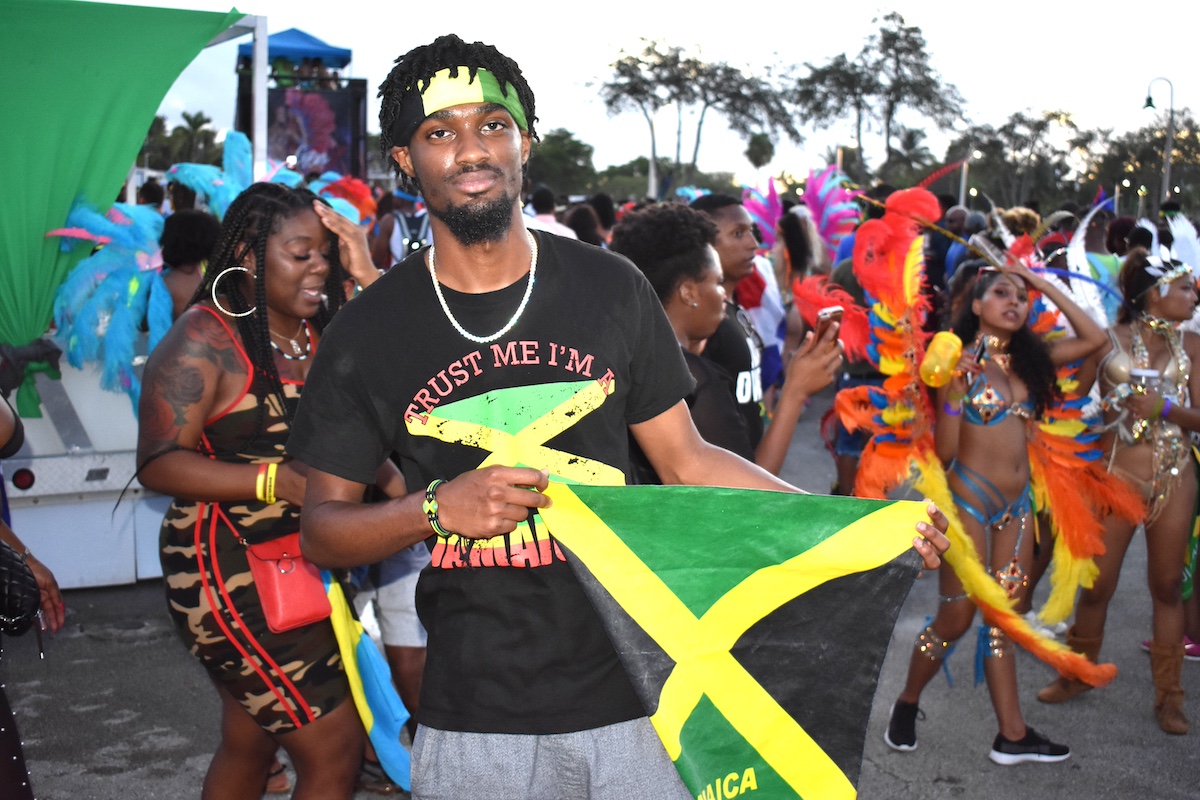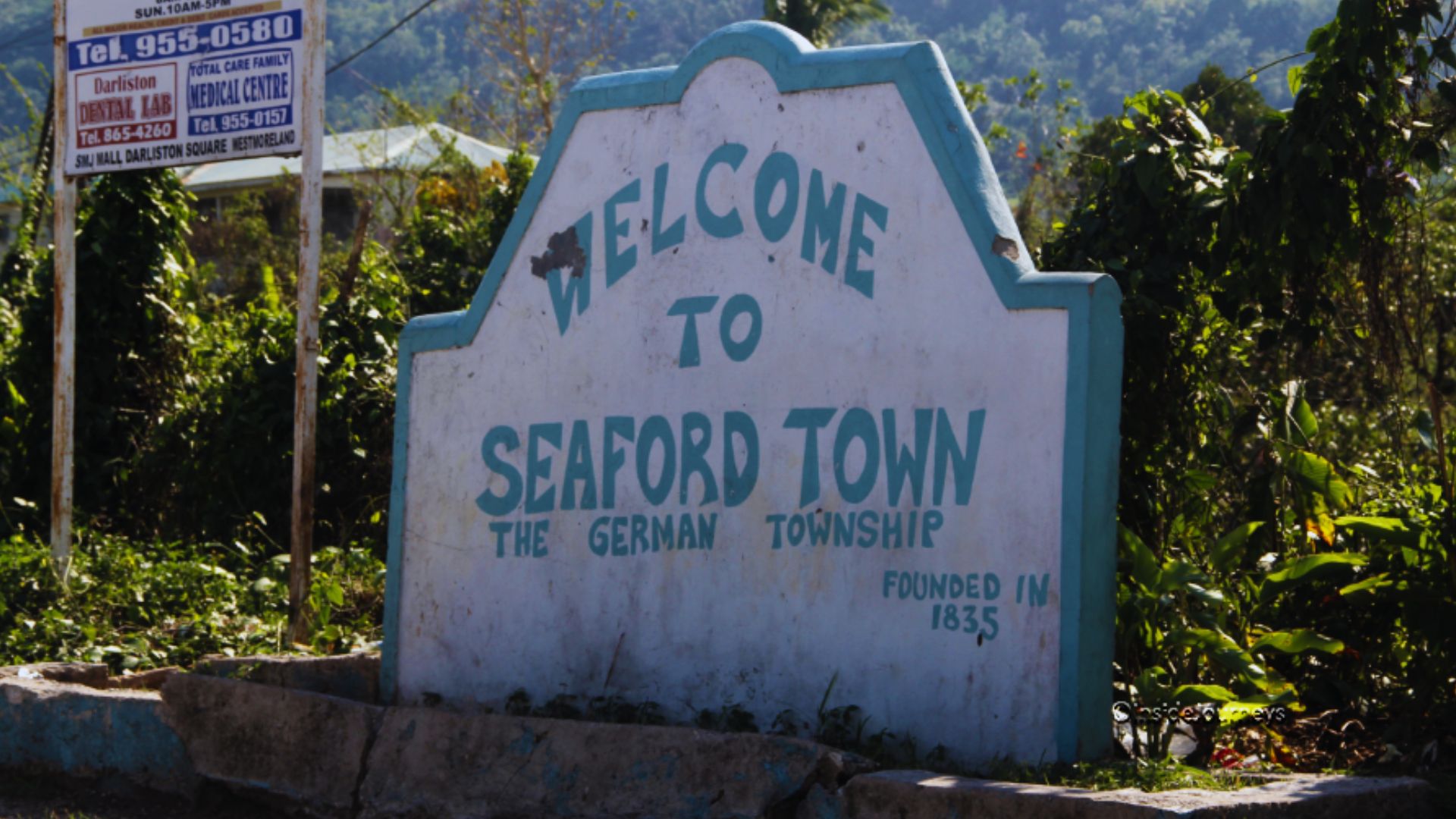I was inconsolable. It did not matter if it could no longer fit me. I wanted it back. I was robbed. I would never go back there, not in a million years. I wanted my black patent leather t-strap shoes.
Between ages four and six, I attended the preparatory school of the West Indies Training College. An American import, the school year was based on the semester system, with long summer holidays extending from early June to early September. Never one to encourage the waste of precious time in play, when it could be spent on education, my grandmother packed me off to her sister in Westmoreland.
The journey to Hopeton, just outside of New Market in the neighbouring parish of St. Elizabeth, was a long and tedious one. We left Mandeville by bus at midday on a Sunday and arrived in Hopeton at midnight, nauseated from the long journey, the fumes from the bus’ exhaust, the winding road and innumerable stops and starts to pick up and disgorge passengers and for the driver and sideman to have their Sunday dinner. We were met by Aunt Hess’ oldest son Clarence and completed the remaining one-mile walk by torchlight, to the accompaniment of croaking frogs, singing tree toads and the peenie wallies, who noisily augmented the torchlight.
For six weeks, I accompanied Aunt Hess’ younger children – Joyce and Hortense to school. Age-wise, I fell between them. My recollections are of a school perched on a very steep hill, beside a church. The classrooms were packed, and the teachers kind. Later I found out that it was the school attached to the historic Mt. Carmel Moravian Church where my grandmother had played the church organ, before leaving for Mandeville and Hillside to marry my grandfather.
Like my grandmother, Aunt Hess and husband Uncle Walter Jamieson had ten children. They lived in a large wooden house on stilts, on a gently sloping hill, with fields of sugar cane on either side. The water tank was prominently placed to the left of the front yard, and served by the guttering strategically laid around the eaves of the house.
It was at Aunt Hess that I learned to churn milk into butter, drink cocoa tea, swimming with oil from the liberal amounts of coconut milk and wet sugar used, drink sugar cane juice fresh from the mill. It was at Aunt Hess’ that I saw my first nutmeg tree, ate sweet lime and red top grater cake.
It was during these holidays that I met my grandmother’s family – too numerous to remember names and relationships – all combined in a kaleidoscope of robust, barefoot women with smiling faces, men with hearty voices, on horseback rounding up cattle, and donkeys struggling uphill with loads of sugar cane on their backs. I remember the aroma of fresh bread and totoes baked in huge brick ovens in kitchens with floors made of packed earth. I can still picture the narrow winding uphill paths leading to wooden houses in huge yards where clumps of sugar cane plants and fruit tress jostled for space; lemonade made from wet sugar and lime; copper pots on huge open fires boiling sugar; horses slowly walking in circles around the sugarcane mill while the dark green foaming juice flowed into buckets below; duppy stories at nighttime to the glare of home-sweet-home lamps. It was also at Aunt Hess’, that my great grandmother ‘Grannie’ was said to have told Aunt Hess in a dream to give me tea brewed from a special weed that grew on her land to heal ’ my sick heart.’
I remember Lascelles, Aunt Hess’s seventh child and who was supposed to be the brains in the family, but who in my six year old wisdom, struck me as strange. He had enormous buck teeth, a stammer and a blank stare and seemed to have a permanently running nose. I was proven right many years later when he did in fact develop serious psychological problems, shattering the dreams Aunt Hess had had for his academic success. I remember Rudolph who later came to Mandeville and lived with us in Brumalia. I remember Rhona, the oldest girl who also came to Mandeville and found employment and love. I heard about but never met Caswell, who was described as the handsome one and who was living in the USA, and Rose who was studying nursing in Kingston and later migrated to England.
Some days Hortense, Joyce and I would go to visit our Uncle Lance, We went by shortcut, up a narrow steep track to another ‘Jones’; a huge plateau where the family houses were interspersed with extensive natural crab grass lawns, and cane fields. We had to pay mini-visits to all the houses we passed on the way. I was routinely inspected, asked about my grandmother, aunts and uncles declared who I resembled, and fed totoes, corn meal pone, cane juice and grater cakes. One house stands out in my memory. It belonged to Martha and Etta, Grannie’s nieces from her brother’s marriage to Katie their mother. To my childish eyes, Martha – Etta had left for Kingston – kept such an incredibly tidy house, it looked like a museum, not a house in which real people lived. I remember we had to walk on strips of cloth from the kitchen door to the drawing and dining rooms. But museum notwithstanding, Aunt Martha sold her baked products at church harvests. She simply saddled up her donkey and took the long trek to wherever there was a market for her baked products, sometimes in other parishes as far away as Manchester. In addition, she reared her sister Etta’s two children, Busta who became a successful insurance salesman and his older brother Noel a trained teacher.
Uncle Lance’s house was in stark contrast to Martha’s. There were children and with them came the inevitable slightly untidy lived-in appearance. Aunt Melissa his wife and first cousin, was a short, stout woman with thick black plaits and her ten bare toes planted firmly on the damp ground. Uncle Lance fancied himself as the lord of the manor. He treated his wife with benign contempt and his children as if they were better than everyone else’s children. Winston was going to be a doctor and Shella a nurse. Uncle Lance had lived in the USA and that alone made him superior to his siblings, indeed everyone else with whom he came in contact.
As for me, a bastard, I was regarded as beneath the pale and well below the social standing and shining future of his children. After enquiring about his sister Amy – my grandmother – I was ignored. We played with Winston and Shella, cut and ground cane into cane juice by feeding the cut cane into the mill, holding the handle and walking around in the same way the horses did. Fresh cane juice is one of the most refreshing drinks one can have.
Uncle Lance’s dreams for Winston were never realised. Today he is a farmer on the family land, doing exactly what his father did sixty-odd years ago. Shella’s ambitions were almost realized. On her way by boat to nursing school in England – that was the preferred mode of travel to the ‘mother country’ at that time – Cupid struck in the form of a young man she met on board. They fell in love during the three-week trip. The ship-board romance and an ensuing pregnancy torpedoed her nursing ambition. Uncle Lance was devastated. All was not lost, however. Love prevailed. The young man honoured his commitment. They got married and settled in St. Catherine from whence he came. The story ended happily, when the young husband became a preacher.
I remember Aunt Lett, short for Leticia and her sister – another Aunt Melissa – daughters of Brother Gus – short, broad and barefooted, with many children who became teachers, nurses, drivers; the primary professions for young black persons in the colonial days. The third most common profession for young men was the Police Force I specifically remember Floyd , one of her sons who migrated to Kingston where he became a bus driver. I remember a short stocky man who visited us in Mandeville and Kingston and his beautiful white teeth and ready laughter.
I have vague recollections of an Uncle Leon and his wife and children who lived somewhat apart from the rest of the ‘Jones’ family in a large house with a covered tank, accessible by both short-cut from ‘Jones’ and by an uphill public road. He sent his children to the West Indies Training College and there were frequent visitors to Ivy Cottage .I found out, much later, that Uncle Leon was actually Brother Gus’ son, Grannie’s twin brother and therefore my grandmother’s first cousin and my fourth cousin. In 1974 my mother visited from New York when Christopher my son was two years old and diagnosed with an allergy to mosquitoes. At the doctor’s instructions she made long corduroy pants and dashikis to protect him and took him to Uncle Leon, looking like a ‘forced ripe’ little man. It was at Uncle Leon that Chris saw a horse in the flesh for the first time. As my mother recounted the encounter between Chris and the man walking the horse past Uncle Leon’s verandah early one morning where Uncle Leon, his wife, Chris and my mother were seated:, “Grandma, look at the horse!” The man: ”Yes, mi son, is a hawss.” Chris: “No, it is a horse!” (accent on the first syllable). Undaunted the gentleman replied : “You right mi son, is a horse.” Laughter from Uncle Leon and Aunt Alice. Embarrassed silence from my mother. Pride from Chris that he had recognized a real horse.
Thereafter, Uncle Leon and I maintained contact, while my mother and Claire, his youngest child, did so in New York. My first motor vehicle accident occurred when I was returning to Kingston from taking Claire’s children, who were visiting from New York, to Uncle Leon. I was broadsided and have suffered intermittent back pains from that encounter.
But I digress. When I returned home six weeks later and found my black patent leather shoes missing, all the joys and wonder of my holidays paled into insignificance. Little did I know that my mother had given strict instructions to Aunt Hess to pass these shoes onto Hortense, whose feet were smaller than mine. I mourned for my shoes and even the promised purchase of a similar pair, to properly fit my growing feet, could not completely assuage the pain of my loss.
Ironically, I transferred to government school the following year and never again spent the long summer holidays in Westmoreland. Perhaps the loss of my black patent leather shoes was a metaphor for the loss of my days as a kindergartner, a type of rite-of-passage to ‘big school’ life.
Years later, after the historic floods of 1980 when New Market was submerged for several months, the town of Lewisville, named for Cleve Lewis then Member of Parliament, was rebuilt to replace New Market. I was working with the UDC and visited Uncle Leon on some of my trips to the area. On one of these visits I ‘discovered’ a beautiful earthenware Spanish Jar which had been used for storing drinking water in the pre-refrigerator days. It had been relegated to the buttery. I shamelessly begged it. Uncle Leon graciously gave it to me, but not before wondering aloud what on earth I was going to do with it. I got a small van and rope from Michael, who later became my husband, packed it carefully in newspaper and rags, tied it securely to the van frame and drove slowly and carefully home. Today, it has pride of place on my patio, a treasured family heirloom of great nostalgic value.






